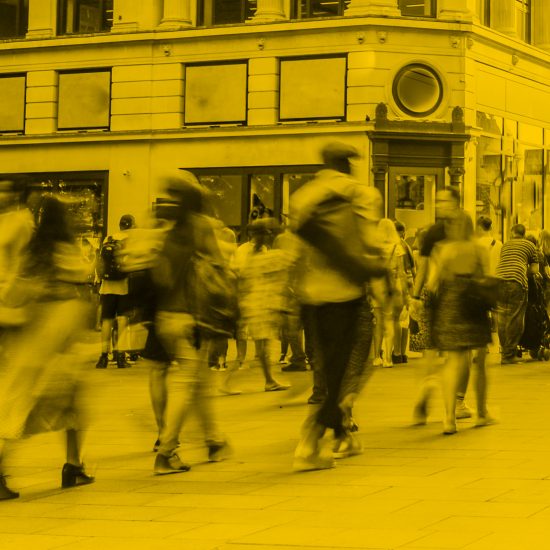The ‘say do gap’ refers to the discrepancy between what we say and what we actually do in practice. It’s a phenomenon that almost all of us can relate to in one way or another, such as exaggerating how much we exercise or recycle, or expressing an intention which is never fulfilled, like buying an electric car. It can apply to us at an individual level, as consumers, employees and business leaders, or to entire organisations, public and private.
For businesses, it’s a critical measure of integrity with implications for brand health, retention of talent and investor confidence: the wider the gap, the less the trust between businesses and their customers, and between businesses and their employees and shareholders.
Among consumers, the ‘say do gap’ is a particular challenge because it indicates the presence of obstacles that prevent them from fulfilling an expressed intention, need or aspiration.
The ‘say do gap’ is particularly evident in consumer behaviour relating to sustainability, where the gap between attitudes to the environment and retail activity is even more pronounced.

20% of consumers intend to buy a Battery Electric Vehicle (BEV) and yet the UK market share of BEV as a proportion of all new car sales is only 7.5% in 2021
(Sources: MM-Eye research and SMMT)
Our research tells us that consumers are concerned about the environment and accept their responsibility as individuals to change. However, analysis also shows that the desire to reduce environmental impact is not represented at the tills. For example, many consumers intend to buy an electric car, and yet the market share for electric cars remains low. Whilst there are many reasons for this, including cost accessibility, product supply, range anxiety, charging infrastructure, the overclaiming of purchase intention cannot be dismissed.
Is the ‘say do gap’ new?
The ‘say do gap’ is not new and first emerged as an idea during the 1990s when it was referred to as the ‘value action gap’, in relation to attitudes and behaviours surrounding environmental issues. Research at the time noted that price, quality, convenience and brand familiarity influenced purchasing behaviour, while environmental considerations were rarely taken into account, regardless of attitudes to the environment.
Overcoming the ‘say do gap’ was therefore identified as critical to improving the effectiveness of strategies intended to address environmental concerns.
What causes the ‘say do gap’?
In 1999, J. Blake, who wrote a well-known paper exploring the reasons for the existence of the gap, identified three groups of barriers to consumer behaviour change in relation to recycling:
• Individuality (I have other issues to worry about)
• Responsibility (it’s somebody else’s problem)
• Practicality (I don’t have enough money, time or space)
Blake argued that identifying and tackling the causes of the ‘say do gap’ – the specific challenges faced by consumers – is the only effective way of closing it. In order to identify the causes, you need to talk to consumers, dig deeply into what they say and examine how much, and in what ways, it differs from what they do.

Recent research undertaken by The Say Do Company shows that most consumers recognise the urgency of the environmental threat and accept their individual responsibility in addressing it, in theory. However, our research also indicates that they find making sustainable choices, in practice, too difficult.
What do consumers think about sustainability?
“Good in theory, hard in practice.”
We have undertaken a comprehensive study of 5000 nationally representative ABC1 consumers in the UK. One of the largest sustainability focused consumer studies ever undertaken in the UK, this substantial research has given us unique and in-depth insights into consumer attitudes to sustainability, the extent of the ‘say do gap’ and the barriers to change.
Recent research undertaken by The Say Do Company shows that most consumers recognise the urgency of the environmental threat and accept their individual responsibility in addressing it, in theory. However, our research also indicates that they find making sustainable choices, in practice, too difficult.
Specifically, Say Do research reveals that:
- 94% believe that every individual has a responsibility to act sustainably, not just companies and governments;
- 90% would like to do more towards leading a sustainable lifestyle; and
- 62% say the subject of sustainability is very complicated and they find it hard to understand how to make more sustainable choices.
90% would like to do more towards leading a sustainable lifestyle; and 62% say the subject of sustainability is very complicated
“If governments and corporations aren’t going to change, why should we?”
More than half of the consumers that we interviewed also said that the case for making the effort as an individual is weakened by insufficient action among governments and corporations:
• 53% say they need to see governments and corporations doing a lot more to address sustainability issues before they make any efforts themselves.
(Source: The Say Do Sustainability Study, April 2021)
“I don’t have enough information to make greener choices.”
Our research also shows that the majority of consumers are keen to do more in order to live sustainably but can’t because there isn’t enough information about sustainability and environmentally friendly products and services. If it’s not clear what difference a particular choice will make, customers default to old habits.
• 88% of people feel they lack information about sustainability or do not feel they are fully informed
• 68% say they would do more to help if they knew which actions would make the most difference.
(Source: The Say Do Sustainability Study, April 2021)

“Too many brands use sustainability as a marketing tool to charge high prices.”
It’s clear in the responses we have analysed that consumers are becoming wary of brands claiming to be sustainable and commanding high prices. A large number of consumers we spoke to said that many of the brands identifying with sustainability did not do enough to justify their premium pricing or demonstrate the added environmental value of their products.
According to our research:
• 76% of consumers think that the products and brands claiming sustainability are usually too expensive.
(Source: The Say Do Sustainability Study, April 2021)
76% of consumers think that the products and brands claiming sustainability are usually too expensive.
The business view; the perceived conflict between sustainability & profitability
We have worked with 100s of UK companies across a wide variety of sectors. Our experience over the last decade or so shows that business leaders – and their businesses – fall into the ‘say do gap’ for a number of common reasons, all ultimately resulting from a perceived conflict between sustainability and profitability.
“I’m too busy serving the bottom line to think about the future.”
Business leaders are often so preoccupied with the short-term – hitting monthly sales targets, maintaining cash flow, generating dividends – that they find it hard to contemplate long-term investments without a guaranteed competitive return.
“We are doing our bit. We comply with all the regulations.”
Many business leaders think they are “doing their bit” by making sure their supply chain and production processes are as efficient as possible, reducing their carbon footprint and driving down costs. While operational efficiencies benefit the bottom line, the savings in costs and carbon are not apparent to their customers and add little direct value to their lives.
“Sustainability is important but it’s not the critical driver of my business”
In the vast majority of businesses, sustainability is confined to a reporting silo, usually within a PR, marketing, compliance or other back-office function.
In other words, most businesses separate it from, rather than incorporate it into, their customer proposition. When positioned like this, the contribution of sustainability is limited to a support rather than core function.

Why does my business need to address the sustainability ‘say do gap’?
All the evidence suggests that ignoring the ‘say do gap’ is no longer an option for any company. Closing the gap is not only necessary to preserve the planet as we know it, but also essential for the future success of all businesses.
Aside from preserving the planet and becoming more appealing to investors and employees, businesses that embrace sustainability as a core part of their customer proposition are more likely to win in the long term.
1) Closing the ‘say do gap’ will protect and strengthen your brand.
Paying lip service to sustainability is a risky approach. We know there is a strong correlation between perceived brand sustainability and purchase consideration of that brand: if consumers believe a brand is sustainable, they are more likely to consider buying its products or services.
The problem is that most consumers don’t have an opinion about a brand’s sustainability, even though they care about it as an issue.
Giving consumers what they need to form that opinion, namely making sustainability a core element of your customer proposition, will boost brand consideration. We can quantify the potential consideration uplift for your business from doing just this.
Moreover, if you are an established category brand leader, sticking to the status quo is even more risky. Brand leaders are now more vulnerable than ever before to new, more agile entrants like Tesla, who take a leadership position, are perceived to offer green value and are consistent in what they say and do.

2) Closing the ‘say do gap’ will increase your market share.
Our research provides compelling evidence that closing the ‘say do gap’ will enable businesses to tap into significant untapped demand for consumer inspired sustainability.
It’s clear that ordinary consumers, not just committed environmentalists, want to reduce their environmental impact by buying environmentally friendly products and services. Businesses are missing out on an opportunity to increase market share because they aren’t making it easy enough for consumers to do so.
3) Closing the ‘say do gap’ will enable you to differentiate in a crowded market.
We know that the customer’s point of view is central to closing the ‘say do gap’. Identifying the obstacles that prevent consumers from fulfilling their intentions and aspirations gives your business an unprecedented opportunity to gain a competitive edge by coming up with innovative solutions. If you don’t make changes that resonate with your customers, others will.
4) Closing the ‘say do gap’ will allow you to charge a price premium.
Our research demonstrates that customers will accept a price premium for authentically sustainable products and services if the quality is good and their green value is evident and relevant to them.
How can Say Do help you close the gap?
As with any problem, the first step in tackling it is to acknowledge that it exists. Having spent years comparing what customers say in surveys with what they do at the tills, we can assure you that the gap is real, and it’s preventing change and limiting growth in your business right now.
Using our unique 4D process, we’ll work with you to explore the gap from both ends: externally from the consumer’s perspective, and internally from within your business.
And with our original data and change management tools, we will take you through the initial diagnosis and discovery phases to shed light on the gap and explore the barriers behind it.
In the development and delivery stages, we will work to identify how best to close the gap, risk assess the options, and design and activate a clear programme of realistic, manageable and effective change. And will refine the programme at regular intervals to ensure it continues to improve financial performance and deliver meaningful change.
